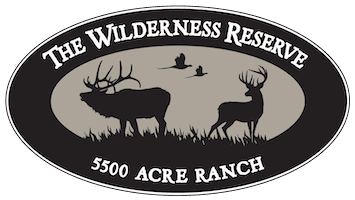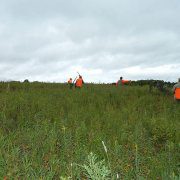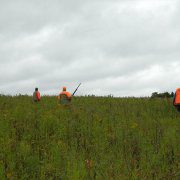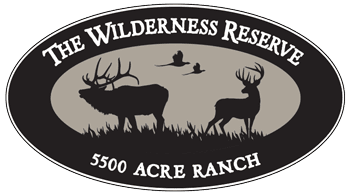The Challenges and Rewards of Late Season Elk Hunting
Hunting elk, even in the best of weather and conditions, can be challenging and often leaves the hunter unsuccessful. Elk seem to have a magical ability to avoid the eager hunter on public land, which can be frustrating after investing all that time and money in the effort. Late season elk hunting is no different, but brings its own set of challenges and rewards, whether on public land or a hunting preserve like The Wilderness Reserve.
Understanding Elk Behavior in Late Fall & Early Winter
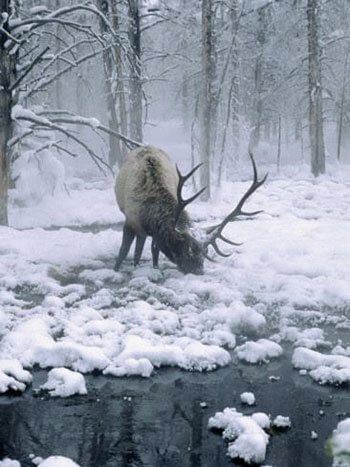 The key to a successful harvest, no matter the game you seek or the time of the year, rests on the ability to understand and predict animal behavior. This can take years to grasp, but there’s no better time than the present to start giving it a shot and fine-tuning your elk intuition. So what are the majestic bulls up to at this time of year?
The key to a successful harvest, no matter the game you seek or the time of the year, rests on the ability to understand and predict animal behavior. This can take years to grasp, but there’s no better time than the present to start giving it a shot and fine-tuning your elk intuition. So what are the majestic bulls up to at this time of year?
Typically, the snow is beginning to push the elk downhill from higher elevations, where the snow has buried the food. As they browse on fir needles and paw for patches of hidden grass, they turn a lighter color of brown or gray as their coat of hair thickens in response to the cold. Elk are also gathering together in the large herds they will remain in through the winter.
As with all Northwoods wildlife, elk are busy in the fall bulking themselves up for the winter season. The bulls don’t shed their antlers until later in the winter or early spring, so they still need to take in those extra calories to maintain that weight. Knowing where the elk are foraging for food can be the key to successful late season elk hunts.
The Challenges of Late Season Elk Hunting
There are naturally a different set of challenges to hunting elk during the late season. Many elk hunters rely on elk calls for the hunt, and this isn’t an effective tool post rut. Physically, the hunt is harder because the hunter faces wading through deep snow and withstanding cold temperatures for long periods of time. Predicting where the big bull will be is only part of the trial.
The physical requirements of a late season hunt aren’t to be underestimated. Elk can walk for a dozen or more miles a day, covering great distances for food. This means that the hunter must be prepared to hike through deep snow, or be smart enough to accurately predict where the bull will be at what time of day. As with anything, though, a bigger challenge means a bigger reward!
The Rewards of Late Season Elk Hunting
If you are hunting public land, the late season means that there are less hunters in the woods. The elk are less likely to be disturbed in their daily movements by the presence of humans. As the big bulls are often successful in eluding early season hunters, you have to chance to harvest a real trophy!
The forest itself at this time of year is a breathtaking reward. With nothing but trees and nature surrounding you, the peacefulness of the forest is magnified by the covering of the snow. Sounds are muffled more, and nature’s beauty is only enhanced. And the white coating allows hunters an easier view, making the coloring of a bull stand out that much more. If you brave the late season hunt and beat the challenges, the sense of accomplishment when you succeed will be that much greater!
Tips for Late Season Elk Hunts
How to master the challenges of late season hunting? Be flexible and adapt! Although elk calls aren’t as effective, this is a great time of year to employ tracking techniques. Whereas a forest floor covered in fallen leaves and debris can easily hide tracks, as well as make quiet movement impossible, a covering of snow makes an elk’s path stand out clearly.
Watch for tracks that have sharp edges and no debris in them as these are indicators of freshness. Look for the path between feeding and sleeping spots. Watch for fresh rubs on the trees, as these are typically in the middle of the bulls daily range and it’s unlikely the path has changed significantly yet. Also check clearings for droppings and signs of freshly eaten vegetation.
Bulls tend to be at slightly higher grounds than the cows, so adjust up after spotting a cow herd. You are more likely to find them on south facing hills than the north side. These areas tend to be warmer with less snow, and thus more food. Most importantly, try to think like the bull because interpreting his behavior accurately can save you from miles of hiking without even a glimpse of your trophy. And when you succeed with a late season elk hunt, pat yourself on the back because not all hunters are dedicated enough and brave enough to attempt this challenge! Once you’ve got your trophy elk, check out this blog on Cooking Elk Meat for a Tasty Meal!
Guided Elk Hunts at The Wilderness Reserve
 Elk hunting packages at The Wilderness Reserve are available from September through Christmas, with late season hunts offering a unique experience for hunters of all abilities. Spotting a proud bull through the snow-tipped branches of the forest is a thrill, and harvesting your trophy is the memory of a lifetime! And nothing is as cozy as returning to a secluded Northwoods cabin to spend the evening recounting the day’s adventure in front of a roaring fireplace! Experience the wonders of elk hunting for yourself on 5,500 acres of quality managed habitat at The Wilderness Reserve!
Elk hunting packages at The Wilderness Reserve are available from September through Christmas, with late season hunts offering a unique experience for hunters of all abilities. Spotting a proud bull through the snow-tipped branches of the forest is a thrill, and harvesting your trophy is the memory of a lifetime! And nothing is as cozy as returning to a secluded Northwoods cabin to spend the evening recounting the day’s adventure in front of a roaring fireplace! Experience the wonders of elk hunting for yourself on 5,500 acres of quality managed habitat at The Wilderness Reserve!
